Surfinia is an ampeline variety of petunia, it has a powerful growth and development of long hanging shoots and abundant long blossoms. "Relative" of Petunia, Surfinia, is becoming increasingly popular culture in the field of flower growing.
Large bright inflorescences of a diverse color of the thick "crack" an empty lush bush resembling a "flower waterfall". Naturally, such chic decorative plants quickly conquer the championship not only among professional landscape designers, but also from ordinary lovers of beautiful plants. Moreover, the landing and care for the perennial does not require special knowledge or preparation, and is subject to even novice flower.
How to grow a horse yourself? What care to provide culture? Detailed information with step-by-step instructions and filing recommendations - read in this selection of material.
Surfinia, plant description
- Surphinia is a hybrid shape of the ampeline group of Petunia and refers to the genus of grassy plants from the Polenic family.
- The rod of petunia in culture is known since the 18th century, while the hybrid of Surfini appeared in the gardens not earlier than 20-30 years ago. Decorative hybrid was bred by Japanese scientists.
- The thermal-loving culture, Petunia of Surfinia, originally from warm tropical countries: Brazil, Argentina and Uruguay. In this regard, in our climate, the flower grows more as an annual garden culture, more often a potty type.
- A feature of the varieties of Surfinia are long hanging dense fruit stems reaching a length of up to 2 meters. This feature allows you to grow a decorative dusty plant in suspended porridges and high flower vases.
- The root system is powerful and well branched.
- The flowering of Surfinia is long and abundant, lasts from 2 to 3 months. Flowers are bright and large, reach up to 6 cm in diameter, can be simple or terry. Coloring of inflorescence can be different (white, pink, red, blue, purple, double, etc.), depending on the variety.
- Surfinia Ampelnaya resembles a "flower waterfall" from long shoots, thick stung by fragrant and beautiful flowers. In addition to the ampel form, compact dwarf varieties of Surfinia are also displayed.
Surphinia and Petunia: What is the difference?
- As was set out above, the Surfinia is one of the hybrid types of petunia. Often, the Surfinia is called ampel petunia, but it is a separate look. By the way, the genus of petunia includes about 40 species of beautiful plants.
- The flower of Surfinia has a number of advantages towards classic petunition: increased resistance to adverse weather conditions (in particular to wind and rain), diseases and pests; early, abundant and long blossom; varietal variety and diverse bright shades of inflorescence; The accelerated process of vegetation, allowing for two months to fully increase the green mass.
- Together with a number of advantages and advantages, Surfinia, as well as most types of petunia, does not need special care and is unpretentious and hardy culture.
Surfinia, Application in Landscape Design
- The flower plant of the Surfinity looks spectacularly in the suspended baskets as the "blooming cascade" or on decorative high flower beds as a magnificent "bright hat".
- Culture quickly grow up and closes any empty seats or cleans, forming spectacular "thickets".
- Ideal an amility species of petunia for growing on the balcony, in special suspended boxes and even to create unusual vertical clubs.
- Often landscape designers prefer alternate and combine areas with different painted surfins, creating fabulous "paintings" and colorful landscapes.
- Speeciously and unusually look at the planting of the Surfinia in suspended porridge with side holes.
Surfing varieties and varieties
Consider the most popular varieties, varieties and photos of syrupses cultivated by flowers.
Surfing ampelnaya
- Hybrid shape of ampeline petunia, with powerful branched shoots.
- Stems and leaves are slightly pubescent. The leaves are not growing thick.
- Differs in early blossoms and major inflorescences.
- Culture is successfully cultivated in garden sites.
Surfinia Elou
- One of the most first hybrid varieties of ampel petunia. Differs in elevated frost-resistant properties.
- The main distinguishing feature is a gentle yellow color of inflorescence.
- Blossom is plentiful and long, until the first frost.
Surfini Burgundy
- Massive, branched and, at the same time, a compact bush with a rich burgundy-wine-wine-tedded inflorescences.
- Flowering lasts a few months. Inflorescences are large bright.
- Cultivate both in suspended porridge and garden flower beds.
Double Perf Surfinia
- Fast-growing terry grade with shoots reaching for about one meter long. At the same time, the height of the bush often does not exceed 20-25 cm.
- The variety moves great humidity and raw weather in the summer.
- The color of the inflorescence is complex, bright purple, "deep" color.
Surfinia Hot Pink
- Attractive variety with large texture colors flowers: Rose background brightly outlined raspberry stripes coming from the depth of gloom to wavy edges.
- The plant is compact, the middle rose. Flowers for 2 months.
Surfinia Table White
- An early variety of Surfinia, which is characterized by the longest period of flowering - about six months. It is considered one of the most popular varieties.
- Coloring bells of prominent inflorescences Snow white. Blossom abundant (spring-summer). The bushes are compact, lush.
Surfinia Red
- Dwarf variety of spherical neat bushes, thickly covered with red flowers.
- One of the most beautiful varieties of Surfini, in shape resembling miniature balls.
- The bloom is early, long. In the care of "Surfinia Red" is considered quite capricious.
Surfinia hot red
- Ampel a variety of surfing with shoots to one meter.
- Leaves of a dark green shade, slightly pubescent.
- Large and bright inflorescences, with clearly pronounced veins on a burgundy background, look spectacular and colorful.
Surfinia Starry Sky
- Ampel rapidly growing grade, whose shoots reaches one meter in length.
- Blossom abundant, early, throughout the summer. Large inflorescences have an unusually catchy color - dark purple with white splashes resembling a starry sky.
Surfini Velwet
- Branched, abundantly blooming variety of surfins, with large purple inflorescences (and dark streaks), forming a cascade of hanging shoots.
- Flowering long, about 3 months. The number of flowers significantly exceeds the number of leaves.
- Grow the view predominantly in hanging baskets, porridge or boxes. Surfinia Velvet, landed on the flower, forms a luxurious thick "carpet".
- The Surfinia Salmon Shaiz Velvet is distinguished by the same long shoots and inflorescences of gentle, salmon shade with contrasting streaks.
Surfinia Mahova
- Plant with large terry inflorescences and wavy petals of a dark pink shade, resembling miniature roses.
- The shoots reach a length of no more than 50 cm, the leaves are small, pubescent.
- Blossom abundant, long, throughout the summer.
Skye Blue Surfinia
- Culture with long elastic shoots and small, slightly squeezed leaves.
- Flowers in summer for 3 months. Inflorescences of pale purple color with faded core.
Surfini Blue Wain.
- Ampel culture with long escapes and medium size, dark green leaves.
- Inflorescences are large, gentle lilac shade with ink residences and darkened zev.
- Flowers have a pleasant aroma that enhances in the evening.
Surfinia Rose Wein.
- The plant forms long and elastic shoots forming a thick cascade of dark green leafy plates and numerous flowers.
- The color of the inflorescence is bright pink with contrasting streaks and dark zev.
- The bloom is early, falls on the spring.
Multi-Year Surphinia
- Ampelnotee with many long elastic branches.
- Mid-sized leaves, with easy-to-wear.
- Inflorescences are large, numerous, different shades and sizes, depending on the standard affiliation of the culture.
- Flowering falls on the summer months.
Pink Surfinia
- The plant with branched and lush escapes is ideal for the formation of the so-called. "Carpet" flower.
- Inflorescences are large, bright pink colors with raspberry vessels on wavy petals.
- Highly decorative variety of surfing, blooming for 3-year-old months.
Surfinia Rome
- A variety with a lush rounded crown and thick decrepitude creates the effect of the volume of the plant.
- Large inflorescences with gentle aroma and unusual color - rich in purple petals with white border.
Surfinia Lime
- A variety with dense long escapes and small leaves.
- Inflorescences have a rare color - lemon shade of petals with yellow streaks. Flowers plant in summer.
Where to buy Surfinia?
Most often, Surfinia is bought in garden shops or in flower exhibitions in the form of finished seedlings. The grown seedlings are perfectly transferred to the transplant, perfectly survive and quickly increase the green mass.
The seed method of reproduction of Surfini is practically not used, since the plant has little seeds, and they have a low germination. When buying seeds should be paid to the deadlines for their storage. At the same time, it is important to know that the Draised specimens have fewer storage times, compared with the usual.
According to the reviews of the flower water grown, the plant is easily leaving in a new place and requires a minimum of attention.
Planting Surfenia
Surfinia is grown, as a rule, from cuttings of adult plants. The seed method is theoretically also possible, but taking into account the laboriousness of the process and the low germination of seeds, is used by flowers extremely rarely.
Conditions for planting Surfinia
- Surfinia - light and thermal-loving culture, therefore it is necessary to plant it in such a place where the sunlight will be enough. Suspended baskets or caspo should also be placed taking into account this plant features. So that long shoots are not confused and looked as decorative as possible, the flower pots should be switched from a leeward side. The optimally favorable place is a sunny side (with a mild half a day), without drafts and thick shadows. With a lack of illumination of Surfinia, it begins to grow worse and stops blooming. So that the rain does not fall on the flower, the caspets are placed under artificial canopies.
- Best soil for Surfini is loose, fertile loams or studs with a neutral or weak-eyed medium reaction. In acidic soils, it is necessary to add lime (300 g per 1 m 2) Or charcoal. In the case of a scant in the composition of the soil before landing it is better to eat it with an organicaic: humid or compost. The only exception is not to add fresh, not overwhelmed dung, as it contributes to the development of fungal diseases and aggressively affects the plant. The required soil substrate can be bought or prepared independently. To obtain the desired soil, mixed in equal proportions peat and biohumus, after which the ferry soil is added to this nutrient loose mixture (two times more prepared mixture) and a little vermiculite (for loyalty).
- So that the roots of the Surfinia are not subjected to rotting, the soil must be not only loose and easy, but also by the water permeable, so that the moisture is not delayed in the soil. To do this, before planting at the bottom of the trench or flower pot, the drainage layer of fine rubble or clamzit is laid. The thickness of the drainage layer should be at least 5 cm. In the case of using a flower pot, the container should be selected spacious so that the roots are freely developed and crushed.
Growing Surfini Chenikov
- The cultivation of Surfinia with the help of cuttings occurs at the end of summer or at the beginning of autumn, so that the seedlings obtained can be planted in the spring.
- As a cuttings, the tops of the surfinia are used, up to 10 cm long.
- The bottom leaves are removed on cut cuttings, after which they are immediately planted into the nutrient ground.
- It is not necessary to postpone the landing of the cuttings, since after a few hours their viability is disastrically decreased.
- Experienced flowerflowers recommend to dip the cuttings of the Surfini before planting in Powder Korninn.
- For planting, you can use common containers or individual plastic containers. Shoots deepened in the soil at 2 \\ 3 of their length.
- Seedlings covered with plastic bottles, film or glass, creating the most favorable "hothouse conditions".
- Caring for rooting cuttings is regular watering, there is a warm room (not less than 20 0C) and good light. When you see shoots of new leaves planted - "teplichku" clean.
- Rooted seedlings are planted in the spring on a bed. If the design intent involves creating dense "flower monolith", seedlings are planted close to one another (50-70 plants per 1 m 2).
Growing seeds surfinii
- Growing Surfinii using seed - time-consuming and inefficient process that is still used in practice by some experienced growers.
- Sowing is carried out in early spring. For sowing fresh seeds are selected only surfinii.
- To facilitate sowing small seeds surfinii, they are pre-mixed with sand, then seeded evenly over the surface of the prepared container. Top seed powder does not need to.
- Soil for sowing seeds should be light, permeable and nutritious. Suitable peat-earth mixture with the addition of sand or perlite. At the bottom of the container is required to fit the seat drainage layer.
- Then the soil is moistened with seeds of the pulverizer and the container itself closed film or glass.
- Planting container is placed in a warm, moderately-lit place. for seedlings Care includes regular moisturizing of soil pulverizer and airing the mini-greenhouse.
- After about 10 days the first shoots appear surfinii and "Green House" shelter is completely removed. At this time, the tender roots of seedlings sprinkled with oven-dried sand, contributing to strengthening them and preventing decay.
- The development of phase 2 leaves seedlings dive in separate containers, e.g., disposable cups. If surfinii seeds originally planted in individual containers (in peat tablets), there is no need for swordplay.
- Grown up and became strong surfiny seedlings planted in a flower bed or in pots, and, a few bushes in one pot. With this method of planting bushes surfinii will look especially magnificent and spectacular.
Care of seedlings surfinii
Care surfinii seedlings grown from cuttings or seeds, has the same requirements and conditions.
- Lighting. Often, the seedlings of Surfinia needs not only in daylight sunlight, but also additional illumination, providing 10-14 hours of daylight. Providing lighting It is important to avoid direct sunlight on the delicate leaves of young surfins.
- Topping. When several leaves appear on the green shoots, the tops of the shoots are pumped. This technique allows you to stimulate the bushiness of the plant.
- Feeding For the first time, seedlings begin to feed 2.5-3 weeks after the appearance of germs. The feeders are always combined with watering. A comprehensive fertilizer is used as feeding with a predominance of such an element like potassium. After 2 weeks, the feeder repeat.
- Hardening. Before planting seedlings of Surfini into open primer should be carried out by the procedure for hardening the seedlings. We gradate seedlings gradually, starting from several hours of stay of the plant on the street and ending with the "May Overnight" on the eve of planning flowers in an open ground.
Surfinia care
By providing proper care, the Surphinia will "delight" abundant and long blossoms. During this period, three main points are important for decorative culture: good lighting, regular watering and periodic feeding.
Consider the key regulations for competent landings of flowering surfing.
Watering and loosening of Surfinia
- Surphinia is a fairly moisture-loving plant, which, at the same time, does not carry water stagnation. It is better to water the flower more often, but not too abundantly.
- We water the syrupsy depending on the weather conditions: in the hot period - every day, in cool or rainy - as the soil dried. Sometimes, in particularly dry days, the surfing is watered 2-3 times a day.
- Watering is carried out under root, in the morning or evening, the main rule is not to water the plant in a strong heat.
- Surphinia, landed in suspended porridge, spokes up well to spraying from the sprayer. For these purposes, the indentible water temperature takes.
- But from the rains of Vasons with Surphinia it is better to protect, as Cold water leads to fading of the foliage of perennial.
- As weeding grass grows, it is buried so that it does not interfere with the development of the bushes of Surfinia.
- To prevent the soil drying, a plot with a surf can be closed with small sawdust or peat.
Up. Surfini
- Surphinia needs periodic feeding of potassium-containing fertilizers. It is also allowed to use ready-made balanced complexes intended for flowering plants.
- For souffins growing on a flowerbed, you can use the organic, such as a infusion of a cowboy or a ready-made nutritious high-chart preparation "Vermistim".
- Putting nutrients stimulates the development of green custa mass and makes flowering more abundant and long in time.
- The feeders are always combined with watering. The average rate of fertilizer is once a week. It is recommended to alternate root feeding with leaf spraying.
Pruning and plugging
- So that the plant retains a bushy compact form, its shoots should be trimmed at least half the length. The procedure is carried out at the end of July - early August.
- In addition to shortening the length of the stems, it is impossible to forget about the pinching of the top shoots, which also make a magnificent and uniform crown of the bush of Surfinia. Paging is carried out when shoots grow for about 20 cm long.
- After pinching, the plant reduces the activity of flowering for 2-3 weeks, but after this reducing period, the flower will delight the abundance of numerous buds with a new force.
Fighting diseases and pests of Surfinia
Surphinia is a rather highly resistant plant to many diseases and pests. However, improper care or adverse environmental conditions can provoke the development of fungal infections.
- The appearance on the plants of the cute tick It is extremely undesirable, since in most cases the parasitization of the insect leads to the death of the plant. As soon as traces of the tick of the tick (yellow dots and thin cells) have become noticeable, - the plant is treated with soap solution of the household soap. If the folk remedy turned out to be powerless - resort to chemicals ("Aktellik", "Neron", "Phytheerm").
- If brown spots appear on the leaves of the Surfin - It is about such a common to familial disease as phytoofluorosis. In this case, the plant is treated with any copper-containing drug, for example, a solution of copper sulphate.
- In addition, a hybrid variety of petunia can be amazed gray and white rot, brown spotted, black leg or wet rot. All listed diseases lead to planting plants. Factors contributing to the development of diseases are: increased humidity, stagnation of water, cooling (decrease in temperature to +14 0C), thickened landings, sour of the soil, the presence of pathogenic microbes in plant residues. To combat diseases, regulate the rules of care and process flowers by biological preparations ("phytosporin", "integral") or chemical means of protection ("Maxim", "Sorrow).
- With excessive contribution to the soil of potassium or phosphorus, the pH of the soil becomes very alkaline, which causes such a disease of the plant as chlorosis. At the same time, the leaves are pale, the growth of green mass is suspended, the flowering process is oppressed. To fix the current situation, the bushes are watered with iron chelats.
- Such a pest as bellenka, It is possible to recognize the yellow and wrecks. To combat insects, you can use special traps or biological products, in extreme (launched) cases - chemical means ("Aktara", "Mospilan") will be used.
- Parasitization by trips leads to necrosis of plant tissues. On the leaves first appear silver strokes, after which the affected areas dry out. To destroy pests, chemicals will need (Aktara, Intavir).
Preparation of Surfinia for Winter
How to save the syrup in winter?
- The long-term surfing in the conditions of open ground in the winter is not preserved. The thermal-loving plant can be saved only in the warm room.
- To do this, the entire green mass of the surfinia is cut off, leaving 15-20 cm of shoots. Vases or porridges with flowers are entering a warm bright room (for example, on a warmed veranda or loggia), and if the bushes of the Surfini grew on the flower bed - they transplanted into containers and also entered heat.
- Flower watered significantly less frequently than in the summer, so that the ground does not stop too much. In the spring, the surfing is again carried out and transplant to the street.
Features of the reproduction of Surfini
Surphinia is breeding both vegetative (cuttings) and generative ways.
- Most often in culture, the syrup is bred with stalling. In this case, all signs of the parent plant are fully saved. The cuttings are obtained from cut-off shoots with 2-3 pairs of leaves. Features of planting and caring for cuttings are considered above, in the section "Growing Surfinia with cuttings".
- The seed method of breeding is also possible, although it is considered less popular due to the low seed germination. For landing of Surfini, it is better to buy seeds in specialized flower stores, as the seed material collected independently has a very low percentage of germination. Features of planting and care seeds are discussed above, in the section "Growing Surfinia Seeds".
Possible problems in the cultivation of Surfinia
- The growth of Surfini suspended, there is no bloom.
Possible causes: Insufficient lighting, religion of shoots when tapping.
- Harvesting the root system of Surfinia.
Possible causes: The oversupply of moisture, the disease "black leg".
- Burns appeared on the leaves.
Possible causes: incorrect and irrational making feeding.
Thus, the ampel petunia of the Surfinia is an amazing beauty flower, striking with bright colors and an abundance of buds on long hanging shoots. In addition, it is absolutely easy to care for Surfinia, it suffices to comply with standard agrotechnical requirements. Watering, feeding, pruning and pinching - the main activities for the care of ampel "Beauty".

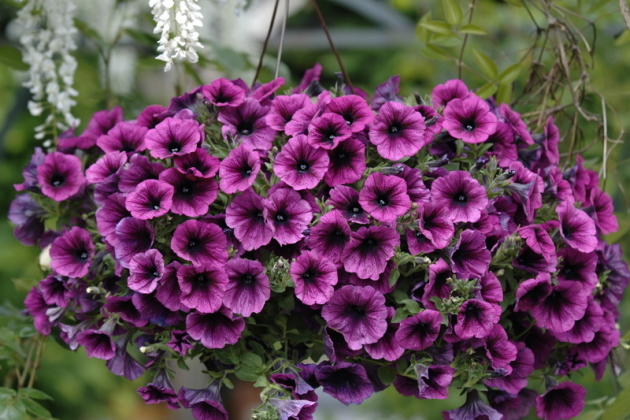


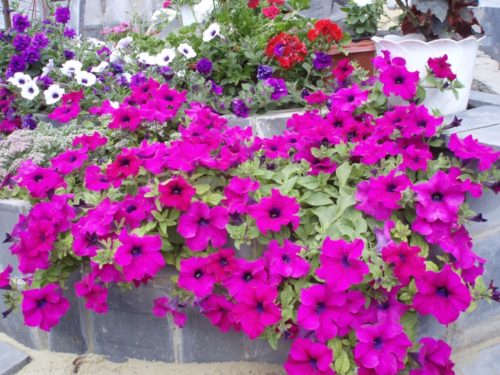
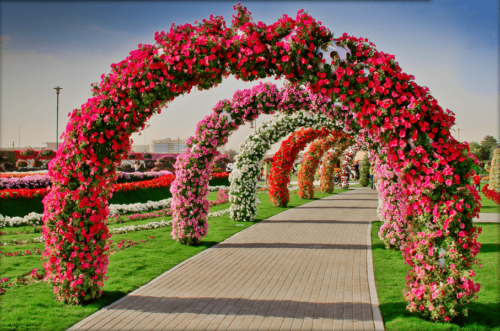
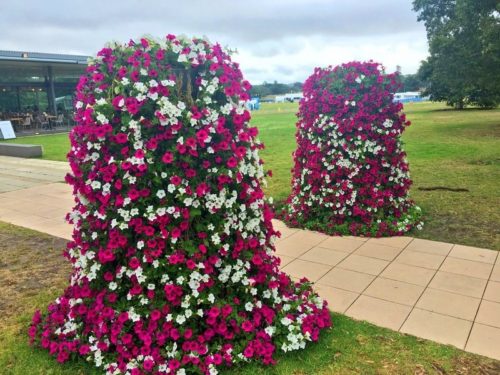
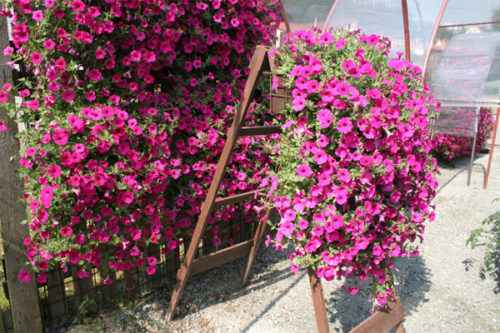
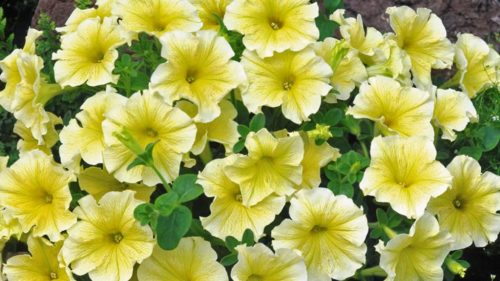
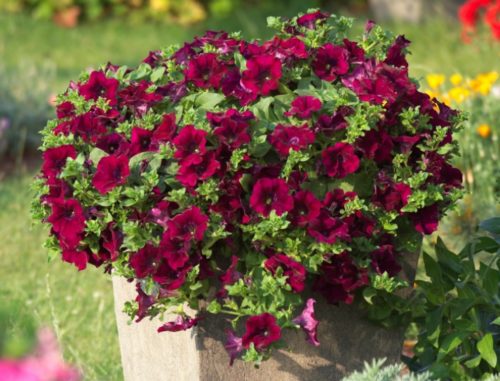




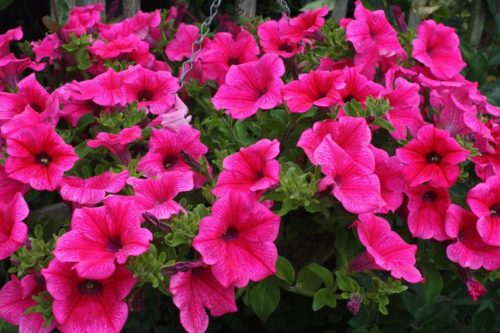
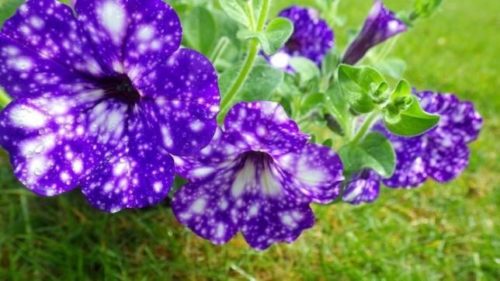
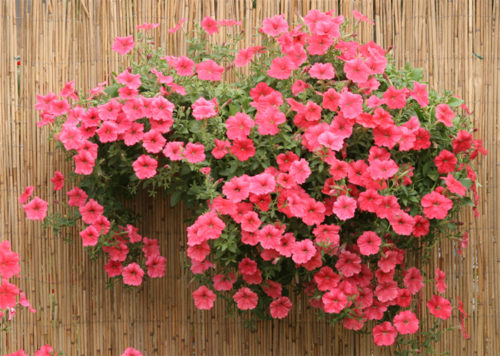
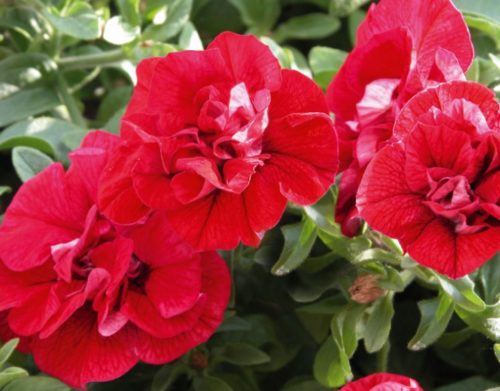
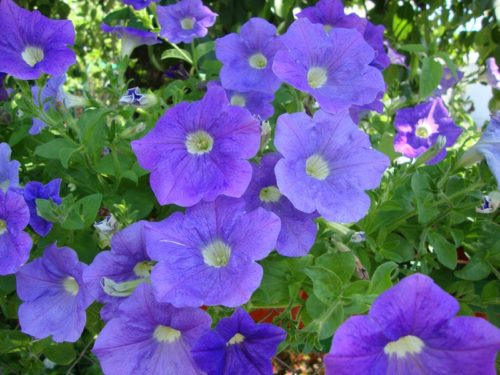



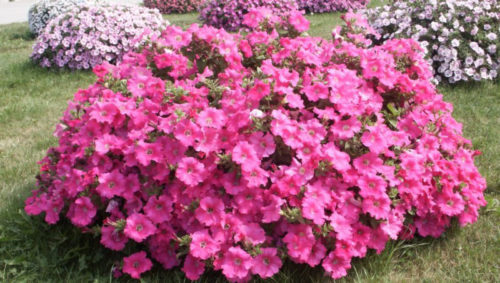

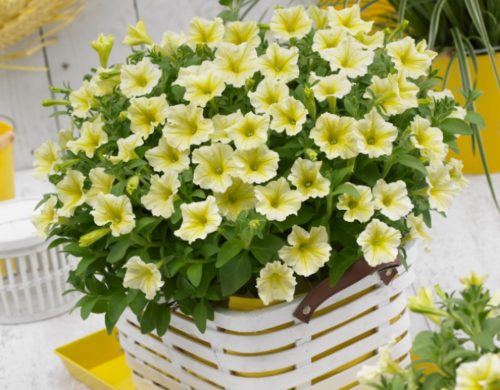

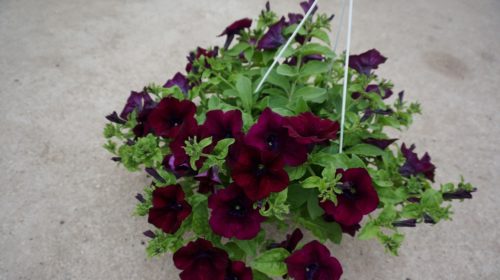
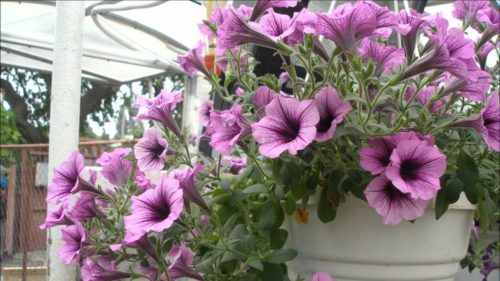
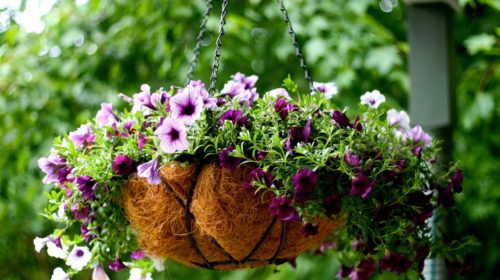
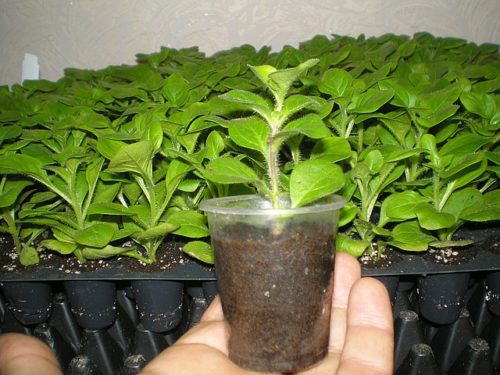
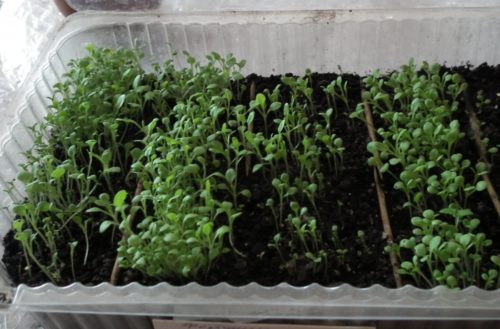
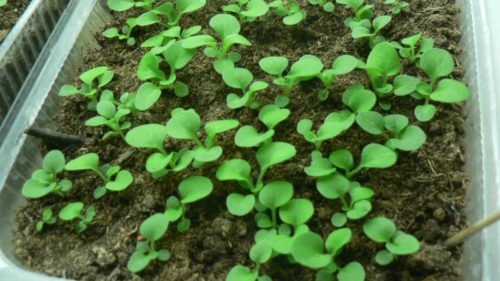

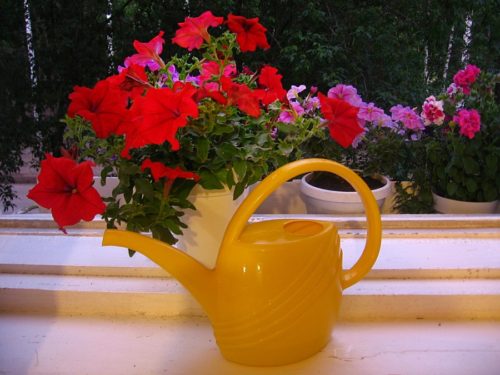
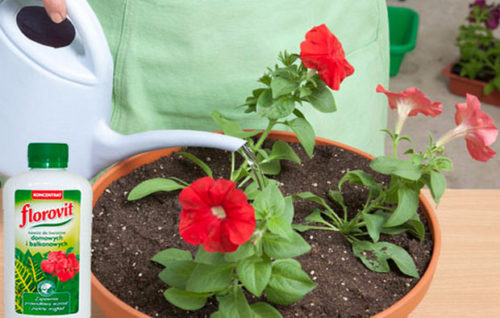
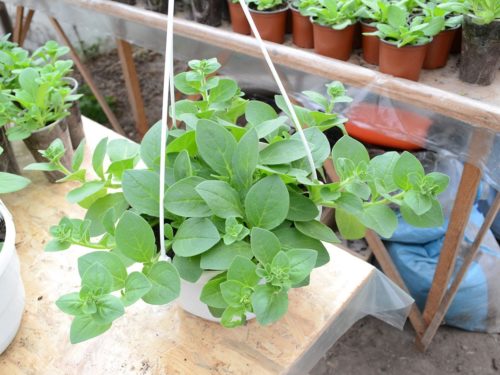
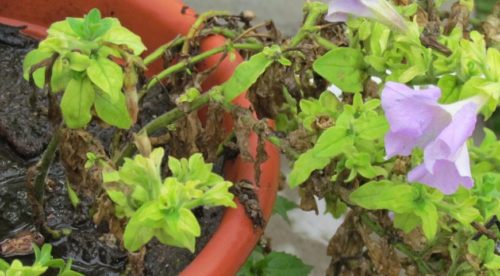
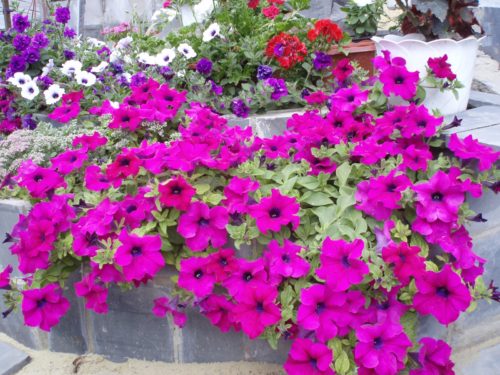


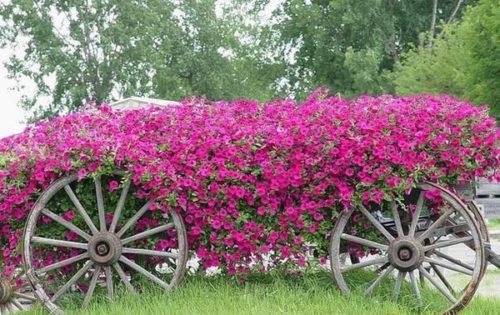












 Start a discussion ...
Start a discussion ...